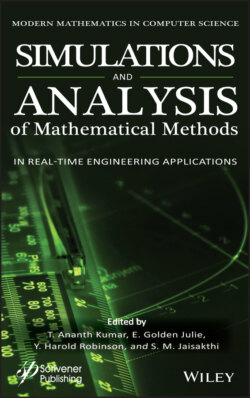Читать книгу Simulation and Analysis of Mathematical Methods in Real-Time Engineering Applications - Группа авторов - Страница 37
2.2.2 Computation Offloading Mechanisms
ОглавлениеComputational offloading is one of the primary processes in an edge computing environment to reduce the delay and improve the response time. There are various approaches for computational offloading, as shown in Figure 2.5, based on offloading flow and offloading scenario.
Based on offloading goals, the computation offloading is divided into two different categories. Offloading flow comes under the first category where the previous offloading category can be divided into four other categories, i.e., offloading from ED to EC, offloading from EC to cloud computing, offloading from one server to another and hierarchical offloading. Offloading scenario, which is the second, is based on one-to-one scenarios, one-to-many scenarios, many-to-one scenario and many-to-many scenarios [15].
Figure 2.5 Computation offloading flow.
i) Classification based on offloading flow
1 a) From ED to EC. This comes under the first category where ED and EC together form a whole system. Here, computational tasks are executed by ED locally and are offloaded at EC [15].
2 b) From EC to CC - ED generally sends the task to the EC. EC analyzes and decides if a particular task can be performed by it or if not, it sends it to the cloud to complete the task. This is the second category of Offloading flow [15].
3 c) Many ECs combine together and form an edge system from EC to others - This being the third category of Offloading flow. When an EC receives a task, it is decided by EC whether to perform a particular task or to offload it to the EC server in the same system, which has a direct impact on offloading performance. To optimize execution delay and power consumption, cluster formation is carried out in a single scenario [15].
4 d) The hierarchical offloading. The fourth category of offloading flow works in a tier/hierarchical system. A single task can be offloaded to local EC/cloud/several or a few of the tiers [15].
ii) Classification based on offloading scenarios
1 a) One-to-one - This is the first offloading scenario. To optimize the offloading performance, one entity decides to offload a particular computational task or not. This application can depict many to one offloading as one entity (ED) can run on multiple applications by offloading data separately [15].
2 b) One-to-many - Many EC servers is available in one too many offloading schemes. ED decides the offloading decision which includes whether to offload and to which server it should offload. This is the second offloading scenario [15].
3 c) Many-to-one - As the name suggests, being the third of offloading scenarios, many EDs offload their tasks to one server. For optimizing the whole system, the decision is made by all the entities. The single server is responsible for making the decision for all Eds [15].
4 d) Many-to-many - The fourth offloading scenario, i.e., many-to-many, being the most complex one, is the combination of one-to-many offloading and many-to-many offloading. The information from both EC and ED is required for decision making for the centralized offloading model in the many-to-many offloading scenario. Due to the complexity of solving the model, distributed method offloading is much needed [15].
